Geographical Pattern Evolution of Health Resources in China: Spatio-Temporal Dynamics and Spatial Mismatch
- PMID: 36288033
- PMCID: PMC9609797
- DOI: 10.3390/tropicalmed7100292
Geographical Pattern Evolution of Health Resources in China: Spatio-Temporal Dynamics and Spatial Mismatch
Abstract
(1) Background: The rational allocation of limited medical resources is the premise of safeguarding the public health. Especially since the outbreak of COVID-19, the evolution dynamics and spatial mismatch of medical resources have been a focal and frontier issue in academic discussions. (2) Methods: Based on the competitive state model and spatial mismatch index, this paper uses GIS and Geodetector spatial analysis methods and three typical indicators of hospitals, doctors, and beds to conduct an empirical study on the evolutionary characteristics and degree of mismatch in the geographic pattern of health resources in China from 2010 to 2020 (the data are from official publications issued by the National Bureau of statistics in China), in two dimensions of resource supply (economic carrying capacity) and demand (potential demand or need of residents). (3) Results: The spatial pattern of health resources at the provincial level in China has been firmly established for a long time, and the children and elderly population, health care government investment, and service industry added value are the key factors influencing the geographical distribution of health resources. The interaction between the different influence factors is dominated by bifactor enhancement, and about 30-40% of the factor pairs are in a nonlinear enhancement relationship. Hospital, doctor, and bed evolution trends and the magnitude and speed of their changes vary widely in spatial differentiation, but all are characterized by a high level of geographic agglomeration, heterogeneity, and gradient. Dynamic matching is the mainstream of development, while the geographical distribution of negative and positive mismatch shows strong spatial agglomeration and weak spatial autocorrelation. The cold and hot spots with evolution trend and space mismatch are highly clustered, shaping a center-periphery or gradient-varying spatial structure. (4) Conclusions: Despite the variability in the results of the analyses by different dimensions and indicators, the mismatch of health resources in China should not be ignored. According to the mismatch types and change trend, and following the geographic differentiation and spatial agglomeration patterns, this paper constructs a policy design framework of "regionalized governance-classified management", in line with the concept of spatial adaptation and spatial justice, in order to provide a decision making basis for the government to optimize the allocation of health resources and carry out health spatial planning.
Keywords: China; driving mechanism; geospatial health; medical resource; spatial analysis.
Conflict of interest statement
The authors declare no conflict of interest.
Figures



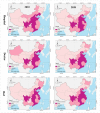


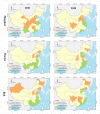
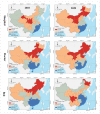
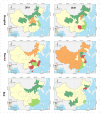
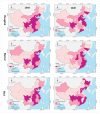


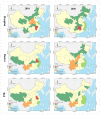
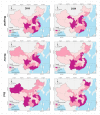

References
-
- Zhou J., Liu C., Xu W., Li L., Zhou M. Research on the Spatial Adaptability of China’s New Urbanization and Urban Medical Resources. Sci. Geogr. Sin. 2021;41:1168–1177. doi: 10.13249/j.cnki.sgs.2021.07.007. - DOI
Grants and funding
LinkOut - more resources
Full Text Sources

